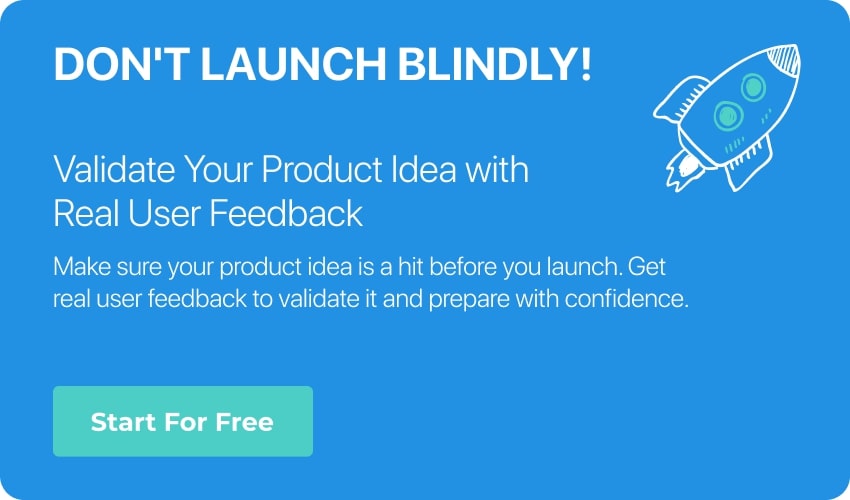Navigating the sprawling universe of e-commerce is like setting a course for an uncharted sea – the potential for discovery and success is vast, but so is the risk of getting lost among competitors.
How can you chart a course that leads your digital storefront to prosperous shores? The answer is market re search, a robust compass every e-commerce entrepreneur should wield.
In 2024, e-commerce has grown exponentially, saturating the digital landscape with various platforms and products. To stand out, you must blend the art of consumer understanding with technological tools and market savvy.
This in-depth guide will walk you through the why, what, and how of ecommerce market research, ensuring that your business sails confidently through uncertain waters.
What is Market Research for Ecommerce?
Ecommerce market research is the systematic gathering, recording, and analysis of data and information about the online selling environment.
It helps you understand market dynamics, including consumer preferences, purchasing behaviors, and trends. This insight lets you make informed decisions about product offerings, pricing strategy, marketing, and more.
10 Key Components of Ecommerce Market Research
There are 10 core components of e-commerce market research. Making sure you have a firm understanding of each will give you a leg up on all of your competitors.
- Target Audience: Understanding your ideal customer is crucial for any business, especially in e-commerce. You need to know their demographics, online behavior, shopping habits, and what motivates them to buy online.
- Competition: Who are your main competitors in the online space? What are their strengths and weaknesses? What are their pricing strategies and marketing tactics? Analyzing your competitors can help you identify opportunities to differentiate yourself and gain a competitive edge.
- Industry Trends: The e-commerce landscape is constantly evolving. It’s important to stay up-to-date on the latest trends, such as the rise of mobile shopping, social commerce, and voice search. This will help you adapt your strategy and stay ahead of the curve.
- Market Size and Growth: How big is the market for your product or service? Is it growing or shrinking? Understanding the market size and growth potential will help you assess the viability of your business idea.
- Customer Needs and Wants: What are your customers’ pain points? What are their unmet needs? What are they looking for in an online shopping experience? By understanding your customers’ needs and wants, you can develop products and services that meet their expectations.
- Regulations: There are a number of regulations that apply to e-commerce businesses, such as data privacy laws and shipping regulations. It’s important to be aware of these regulations and ensure that your business is compliant.
- Payment Processing: How will you accept payments from your customers? There are a number of different payment processing options available, each with its own fees and features. You need to choose a payment processor that is reliable and secure.
- Shipping and Fulfillment: How will you ship your products to your customers? What are your shipping costs? Consider offering different shipping options to cater to different customer needs and budgets.
- Marketing and Promotion: How will you reach your target audience and promote your products or services? There are a number of different marketing channels available, such as search engine optimization (SEO), social media marketing, and email marketing.
- Customer Service: How will you provide customer service to your online customers? Having a responsive and helpful customer service team is essential for building trust and loyalty with your customers.
7-Step Practical Guide on How to Conduct Ecommerce Market Research
Step #1 Define Goals and Objectives
The first crucial step in undertaking e-commerce market research is clearly defining your goals and objectives.
1. Start with Your Business Goals:
- Big Picture: Where do you see your e-commerce business in the next year, two years, or five years? What are your overall business objectives (e.g., increase market share, launch new product lines)?
2. Identify Knowledge Gaps:
- What information do you currently lack that would help you achieve your business goals? Are you unsure of customer preferences for a new product? Do you need to understand competitor strategies better?
3. Translate Gaps into Research Goals:
- Transform your knowledge gaps into clear and actionable research goals. For example, if you’re unsure of customer preferences, your research goal could be to “identify the top three features customers desire in a new product category.”
4. Break Down Goals into Objectives (SMART):
- Ensure your research goals are SMART: Specific, Measurable, Achievable, Relevant, and Time-Bound.
- Specific: Instead of a broad goal of “understanding customer behavior,” define a specific customer segment and desired action (e.g., “analyze purchasing habits of millennial parents on mobile devices”).
- Measurable: How will you gauge success? Set quantifiable targets (e.g., “identify 5 most popular product filters used by mobile customers”).
- Achievable: Be realistic about the scope of your research and resources available.
- Relevant: Align goals with your overall business objectives.
- Time-Bound: Set a timeframe for completing your research (e.g., “complete customer survey by end of quarter”).
5. Prioritize Your Goals:
- Not all goals are created equal. Prioritize your research goals based on their potential impact on your business objectives.
6. Refine and Finalize:
- Review and refine your research goals and objectives to ensure clarity and alignment.

Step #2 Identify Your Target Audience
Understanding your ideal customer is crucial for success in e-commerce.
1. Leverage Existing Customer Data (if applicable):
- If you already have an e-commerce store, analyze your existing customer data using website analytics tools.
- Look at demographics (age, location, gender), purchase history, and browsing behavior to understand who your current customers are.
2. Analyze Your Product/Service:
- Consider the core functionalities and benefits of your product or service.
- Who would benefit most from these features? What problems does it solve?
3. Research Industry Trends and Competitors:
- Identify successful businesses in your niche or with similar products.
- Analyze their target audience through website content, social media presence, and marketing materials.
4. Conduct Market Research (Quantitative & Qualitative):
- Quantitative Research: Conduct online surveys with open-ended and multiple-choice questions to gather insights into demographics, interests, shopping habits, and online behavior.
- Qualitative Research: Organize focus groups or conduct in-depth interviews with potential customers to gain deeper understanding of their motivations, pain points, and decision-making processes.
5. Utilize Social Media Listening Tools:
- Leverage social media listening platforms to track online conversations about your industry, products, and potential competitors.
- Identify who’s talking about these topics, their demographics, and the language they use.
6. Develop Buyer Personas:
- Based on your research findings, create detailed buyer personas representing your ideal customer segments.
- Include demographics, interests, online behavior, buying habits, and challenges faced.
7. Refine and Validate Your Target Audience:
- Don’t treat your initial target audience as set in stone.
- As you gather more data, refine your understanding and adjust your buyer personas if needed.
Bonus Tip: Utilize online tools like Google Trends and social media audience insights to gain further insights into your target audience demographics and online behavior.
Step #3 Identify and Analyze Your Competitors
Knowing your competitors is crucial for success in the e-commerce landscape.
1. Identify Your Direct and Indirect Competitors:
- Direct Competitors: Businesses offering similar products or services targeting the same audience (e.g., selling athletic apparel to young adults).
- Indirect Competitors: Businesses offering substitute products or targeting a similar audience with different needs (e.g., selling yoga wear to young adults).
Start by using these methods to identify competitors:
- Conduct keyword searches on search engines like Google using terms relevant to your products or services. Analyze the top-ranking websites.
- Look at your existing customer data. Who else did they purchase from besides you?
- Research industry publications and reports that identify key players in your market.
- Explore online marketplaces like Amazon or eBay to see who else sells similar products.
2. Analyze Their Online Presence:
- Visit their websites and social media pages. Here’s what to look for:
- Product Offerings: Compare their product range, features, pricing, and unique selling propositions (USPs).
- Website Functionality: Assess their user experience, website navigation, and checkout process.
- Content Strategy: Analyze the type of content they create (blogs, articles, videos) and their brand voice.
- Social Media Presence: Identify which platforms they use, their posting frequency, and how they engage with their audience.
3. Leverage Competitive Analysis Tools:
- Utilize online tools to gather deeper insights:
- SimilarWeb: Analyzes website traffic sources, audience demographics, and competitor websites.
- SEMrush: Provides data on competitor’s paid and organic traffic estimations, sources, and deeper overview of their online presence.
4. Conduct a SWOT Analysis for Each Competitor:
- Analyze each competitor’s Strengths, Weaknesses, Opportunities, and Threats (SWOT).
- Strengths: What are their competitive advantages (e.g., brand recognition, strong customer service)?
- Weaknesses: What are their areas for improvement (e.g., limited product range, high shipping costs)?
- Opportunities: What external factors could benefit them (e.g., emerging trends, new technologies)?
- Threats: What external factors could pose challenges (e.g., new regulations, economic downturn)?
5. Identify Gaps and Opportunities:
- Based on your analysis, identify gaps in the market your competitors might not be addressing.
- Can you offer a better product, a more user-friendly experience, or a unique selling proposition?
Step #4 Monitor Industry Trends
Staying ahead of the curve in e-commerce requires constant awareness of evolving trends.
1. Identify Relevant Sources:
- Industry Publications and Reports: Subscribe to industry publications, research reports, and e-commerce blogs that cover your niche.
- E-commerce Conferences and Webinars: Attend online or in-person conferences and webinars hosted by industry leaders and research firms to gain insights on future trends.
- Social Media Groups and Online Communities: Join relevant social media groups and online communities focused on your industry to stay updated on discussions and emerging trends.
2. Leverage Online Tools and Services:
- Google Trends: Utilize Google Trends to track search volume for keywords related to your industry and identify rising trends.
- Social Listening Tools: Utilize social media listening tools to monitor online conversations about your industry, competitor brands, and emerging trends. Tools like Brandwatch and Sprout Social can help with this.
- E-commerce Trend Reports: Look for reports by reputable research firms like Forrester or eMarketer that specifically focus on e-commerce trends.
3. Analyze Customer Reviews and Feedback:
- Pay close attention to customer reviews on your website, social media pages, and other platforms.
- Identify patterns and themes in customer feedback that might indicate emerging trends or changing preferences.
4. Stay Connected with Industry Experts:
- Follow thought leaders, influencers, and analysts in your industry on social media and subscribe to their newsletters.
- Engage in online discussions and participate in relevant industry forums to gain insights from experts.
5. Monitor E-commerce Platforms:
- Keep an eye on major e-commerce platforms like Amazon or eBay to see what products are selling well and what new features are being introduced.
- Analyze platform updates and announcements to understand how e-commerce giants are adapting to changing trends.
6. Conduct Regular Competitor Analysis:
- Regularly analyze your competitors’ strategies to see if they are adopting new technologies or catering to emerging trends.
- This can give you valuable clues about what might be important for your own business in the future.
7. Refine Your Monitoring Strategy:
- As you gather information, refine your monitoring strategy to focus on the sources that provide the most valuable insights for your business.
- Don’t be afraid to experiment with different tools and resources to stay ahead of the curve.
Step #5 Choose Research Methods
Selecting the right research methods is crucial for gathering valuable insights in e-commerce market research.
1. Define Your Research Goals:
- Clearly define what you want to achieve with your research. Are you trying to understand customer preferences for a new product? Analyze competitor strategies? Identify industry trends?
- Knowing your goals will help you determine the most appropriate methods for collecting data.
2. Consider Your Resources:
- Be realistic about your budget and timeframe. Quantitative methods like surveys can be cost-effective, while in-depth interviews might require more resources.
3. Evaluate the Trade-offs:
- Each research method has its advantages and disadvantages.
- Quantitative methods: Provide large datasets and statistically significant results, but may lack depth in understanding motivations. (e.g., online surveys)
- Qualitative methods: Offer rich insights into customer experiences and thought processes, but may not be generalizable to a larger population. (e.g., focus groups)
4. Explore a Combination of Methods (Triangulation):
- Often, the best approach is to use a combination of quantitative and qualitative methods (triangulation). This allows you to gather a well-rounded understanding of your research topic.
Choosing the right research methods is crucial for gathering valuable insights in your e-commerce market research. Here’s a breakdown of popular methods, including our new AI-powered tool:
- Prelaunch.com’s AI-Powered Amazon Market Research Tool (New Era Method)
- This innovative tool leverages artificial intelligence (AI) to analyze vast amounts of Amazon product data.
- It provides insights into product demand, pricing strategies, competitor analysis, and potential profitability for your product ideas before launch.
- This is a valuable time-saver for identifying promising opportunities within the Amazon marketplace.
Prelaunch.com focuses on customers’ real purchase intent. Rather than paying
passers-by to participate in a survey, on Prelaunch.com, users pay to give their opinion. Using
our proprietary Prelaunch Reservation Funnel, visitors leave a small deposit to reserve
future innovations. Taking out a credit card and making an online payment is the
best indicator of real purchase intent ever. It makes a major difference!
Through customer-centric product development, every innovative concept is validated, fine-tuned by the right audience, and only after made available for purchase. This helps
companies spend their resources on products that have higher potential, preventing them
from wasting money and time developing products nobody wants.
Traditional Methods
2. Surveys
- A cost-effective way to gather data from a large audience.
- Online surveys are convenient and allow you to reach a geographically dispersed target audience.
- Use surveys to measure customer satisfaction, gauge interest in new products, or understand purchasing habits.
3. Focus Groups
- Facilitate in-depth discussions with a small group of customers.
- This method allows you to explore customer experiences, motivations, and perceptions in a more interactive setting.
- Focus groups are ideal for gathering qualitative data and uncovering deeper insights that might not be captured in surveys.
4. Social Media Monitoring
- Track online conversations about your brand, industry, and competitors using social listening tools.
- This method helps you identify customer sentiment, emerging trends, and potential brand reputation issues.
- Analyze social media discussions to understand what people are saying about your niche and what content resonates with them.
5. A/B Testing
- A powerful tool for optimizing your e-commerce website and marketing campaigns.
- A/B testing allows you to compare two versions of a webpage, product image, or marketing message to see which one performs better.
- Use A/B testing to refine your website design, improve conversion rates, and identify the most effective marketing strategies for your target audience.
6. Customer Feedback and Reviews
- A treasure trove of valuable insights readily available on your website, social media pages, and online marketplaces.
- Analyze customer reviews and feedback to understand customer experiences, identify areas for improvement, and discover product feature suggestions.
- Pay close attention to recurring themes and negative feedback to address customer pain points and improve your product or service offerings.
5. Pilot Test Your Methods
- Before launching a large-scale research project, conduct a pilot test with a small sample group. This helps identify any issues with your research methods or survey questions.
Step #6 Execute Your Research
Now that you’ve done the prep work, you can begin the research. Here’s a comprehensive approach to executing your e-commerce market research, incorporating the steps we’ve discussed earlier:
1. Prepare Your Research Tools:
- Online Surveys: If using online surveys, choose a user-friendly survey platform (e.g., Google Forms, SurveyMonkey) and design clear, concise questions that avoid leading answers.
- Website Analytics: Ensure proper website analytics tools (e.g., Google Analytics) are set up to track relevant data like website traffic, user behavior, and conversion rates.
- Social Listening Tools: If using social listening tools, set up filters to track keywords and brand mentions relevant to your research.
- Interview/Focus Group Guides: Develop a structured interview/focus group guide with open-ended questions to guide discussions and ensure you cover all your research objectives.
- A/B Testing Software: Choose a reliable A/B testing platform (e.g., Optimizely, VWO) that allows you to create and evaluate different versions of your website or marketing materials. Ensure the tool can accurately measure performance metrics that are critical to your research, such as conversion rates, click-through rates, and engagement levels.
- Customer Feedback Collection Tools: Set up a system for collecting and organizing customer reviews and feedback. Tools like Trustpilot, Yotpo, or even built-in review features on platforms such as Shopify or Amazon can be instrumental. Ensure you have a process for regularly monitoring feedback, categorizing it for analysis, and identifying actionable insights.
- Review Analysis Software: Consider using text analysis tools or sentiment analysis software (e.g. Amazon Comprehend or MonkeyLearn) to process and analyze large volumes of customer reviews and feedback efficiently. These tools can help you quickly identify common themes, sentiments, and areas of concern that need attention.
2. Recruit Participants:
- Online Surveys: Utilize email marketing lists, social media channels, or online survey platforms to recruit participants who match your target audience. Offer incentives (e.g., discounts) to encourage participation.
- Interviews/Focus Groups: Utilize online recruitment platforms, professional recruiting services, or your existing customer base to find participants who fit your target audience criteria.
3. Conduct Your Ecommerce Product Research:
- Online Surveys: Distribute your survey via email, social media, or by embedding it on your website. Ensure it’s mobile-friendly and track survey completion rates.
- Website Analytics: Monitor key website metrics in your analytics dashboard and identify trends or areas requiring further investigation.
- Social Listening Tools: Utilize social listening tools to track online conversations, analyze sentiment, and identify common themes or emerging trends.
- Interviews/Focus Groups: Conduct interviews or focus groups in person or virtually, following your prepared guide and encouraging open discussion among participants. Record sessions with consent for future reference.
4. Maintain Data Quality:
- Online Surveys: Implement quality control measures like screening questions to eliminate irrelevant entries and monitor for duplicate responses.
- Interviews/Focus Groups: Ensure a comfortable and open discussion environment to encourage honest feedback from participants.
5. Collect and Organize Data:
- Online Surveys: Download survey responses into a spreadsheet or data analysis software for further analysis.
- Website Analytics: Export relevant data from your website analytics platform for further analysis.
- Social Listening Tools: Export data from social listening tools in a format suitable for analysis (e.g., CSV).
- Interviews/Focus Groups: Transcribe recorded interview/focus group sessions for qualitative analysis.
This is the ecommerce data collection phase of your research. The next steps will involve data analysis and reporting, which we will cover in the sections below.
Step #7 Analyze the Data
Following the data cleaning and preparation stage, here’s how to proceed with your e-commerce market research data analysis:
1. Identify Key Metrics and Analyze Trends:
- Quantitative Data:
- Analyze key metrics relevant to your research goals. For example, surveys on customer preferences might include purchase frequency, average order value, or feature prioritization.
- Use charts and graphs to visualize trends over time, compare segments of your target audience (e.g., demographics), or identify correlations between variables.
2. Perform Hypothesis Testing (if applicable):
- If your research involved specific hypotheses about customer behavior or market trends, conduct hypothesis testing using statistical software (e.g., SPSS) to determine their validity.
3. Analyze Qualitative Data:
- Utilize text analysis tools or manual coding to identify recurring themes, patterns, and significant quotes in qualitative data (e.g., interview transcripts, focus group discussions).
4. Identify Customer Personas:
- Based on your combined quantitative and qualitative analysis, develop detailed customer personas representing your ideal customer segments.
- Include demographics, online behavior, buying habits, motivations, and challenges faced by each persona.
5. Refine Your Research Questions:
- As you delve deeper into your data, new questions or areas of exploration might emerge.
- Refine your research questions to guide further analysis and ensure you’re addressing the most critical aspects for your business.
6. Look for Opportunities and Threats:
- Analyze your findings to identify potential opportunities for your e-commerce business based on market trends, customer needs, and competitor gaps.
- Consider potential threats such as emerging regulations, economic downturns, or new competitor strategies.
7. Develop Actionable Recommendations:
- Translate your research insights into concrete actions to improve your e-commerce strategy.
- This might involve:
- Developing new product features based on customer needs.
- Refining your marketing messages to resonate better with your target audience.
- Optimizing your website for a more user-friendly experience.
- This might involve:
8. Prepare a Research Report:
- Summarize your research findings, methodology, and key insights in a well-organized report.
- Include relevant data visualizations, customer persona profiles, and actionable recommendations for your stakeholders.
By following these steps, you can effectively analyze your e-commerce market research data and transform it into a valuable resource to guide your business decisions.
Common Challenges in Ecommerce Market Research
Conducting thorough e-commerce market research is crucial for understanding your audience and making informed strategic decisions. But it’s not without its challenges. Here are some common hurdles you may face:
Identifying the Right Research Questions
E-commerce is a dynamic landscape. Formulating clear and actionable research questions is crucial to gather insights that directly address your business needs and avoid getting lost in a sea of data.
For example, surveys on customer preferences might include purchase frequency, average order value, or feature prioritization.
Reaching the Target Audience
E-commerce customers are spread across the web. Recruiting the right participants for surveys, focus groups, or finding relevant social media conversations can be challenging, especially for niche markets.
Data Quality and Bias
Online surveys and social media listening tools can be susceptible to biased data or unrepresentative samples. Ensuring the quality and representativeness of your data is essential for drawing accurate conclusions.
Keeping Up with the Evolving Landscape
E-commerce trends and customer preferences change rapidly. Your research must be adaptable to capture emerging trends and avoid basing decisions on outdated information.
Data Overload and Analysis Paralysis
The vast amount of data available in e-commerce research can be overwhelming. Having the capacity to analyze it effectively and translate insights into actionable recommendations is critical to turn data into a strategic advantage.
Conclusion
E-commerce success hinges on understanding the market in which you operate. Market research is an indispensable tool that provides clarity, direction, and the edge needed to outshine competitors. In 2024, the e-commerce world continues to evolve, and so must your approach to market research. Stay curious, stay innovative, and never underestimate the value of truly understanding your customer.
FAQs
I don’t have a large budget for market research. Are there any free or low-cost options available?
Absolutely! You can explore several free and low-cost options for e-commerce market research. Here are a few ideas:
- Leverage free online tools: Utilize Google Trends to understand search trends, use social media listening tools with limited free tiers to track online conversations, and use You can explore several free and low-cost options like Google Forms.
- Content analysis: Analyze existing industry reports, research publications, and competitor websites to gather valuable insights. Many resources are freely available online. (Consider Government Websites, University Research Centers, and Industry Publications and Blogs.)
- Customer feedback analysis: Pay close attention to customer reviews on your website, social media pages, and online marketplaces. Identify trends and themes to understand customer needs and concerns.
The article mentions using social listening tools. Can you recommend any specific platforms?
The best social listening tool for you depends on your specific needs and budget. Here are a few popular options to consider:
- Free/Freemium options: Brandwatch offers a free trial, and Hootsuite has a limited free plan.
- Paid options: Sprout Social, Mention, and Brand24 offer paid plans with more advanced features like sentiment analysis and competitor tracking.
I’m overwhelmed by the amount of data I’ve collected. What are some tips for effectively analyzing it?
Don’t worry; use social media listening tools with limited free tiers to track online conversations, and use normal to feel overwhelmed by a large dataset! Here are some tips for effective data analysis:
- Focus on your research goals: Prioritize the data most relevant to your initial research questions. What are you trying to learn?
- Use data visualization tools: Charts and graphs can help you identify trends and patterns in your data more easily.
- Consider using data analysis software: For large datasets, software like Microsoft Excel with Power BI or Google Sheets with data analysis add-ons can help you organize, clean, and analyze your data efficiently.
- Identify key metrics: Focus on the metrics most relevant to your business objectives.
How often should I conduct e-commerce market research?
The e-commerce landscape is constantly evolving, so it’s important to conduct market research regularly. A good approach is to have a comprehensive research plan with in-depth studies done annually or bi-annually, supplemented by ongoing data collection and analysis of website traffic, customer feedback, and social media trends.
My product/service is very niche. How can I conduct effective market research with a limited target audience?
Even for niche markets, there are ways to gather valuable insights. Here are a few suggestions:
- Target online communities: Look for online forums, Facebook groups, or subreddits relevant to your niche. Analyze discussions and engage with potential customers directly.
- Industry influencers: Follow industry influencers and thought leaders on social media. They might provide valuable insights into niche market trends and customer behavior.
Partner with complementary businesses: Consider partnering with companies; it’s that cater to a similar audience but don’t directly compete with you. You can exchange customer data or conduct joint research initiatives.




